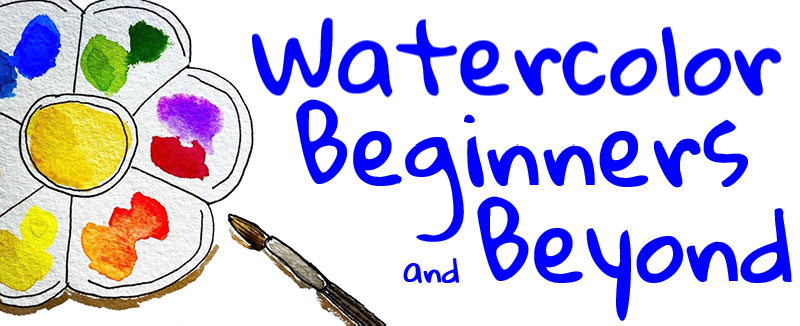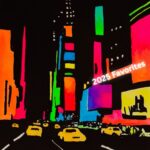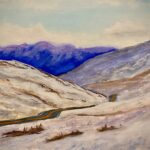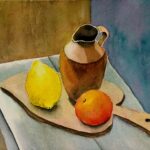Emojis allow people to express emotions and ideas visually in a way that text alone sometimes cannot convey.
Its history traces back to the late 1990s. The first set of emojis was created by Shigetaku Kurita in 1999 while he was working for NTT DoCoMo, a Japanese telecommunications company. In 2010, emojis were standardized by the Unicode Consortium, making them accessible across different platforms and devices.
Painting challenge: Emojis
Include the hashtag #emojis in your Watercolor – Beginners and Beyond Facebook group post.
Deadline September 13, 2024 , 11:59 pm ET
Here are the details:
- Share a painting of an emoji
- Sponsored by St. Louis Art Supply
- Entries must be posted in the Facebook group: Watercolor – Beginners and Beyond
- Include topic hashtag in your Facebook post: #emojis
- You may enter as often as you want
- Open to all countries
- Winner is chosen randomly
- Deadline September 13, 2024, 11:59 pm ET (New York time)
- Winner announced September 15, 2024
- Mediums accepted: watercolor, watercolor pencils, gouache, water soluble graphite, water soluble inks, and mixed media as long as it includes watercolor
- If you also post your painting on Instagram, tag @watercolorbeginnersandbeyond. You could be randomly chosen for a QoR watercolor sample dot card.
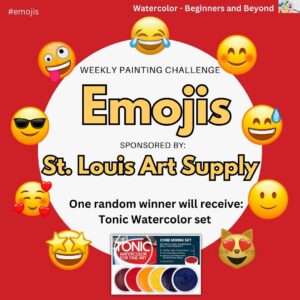
What is the prize?
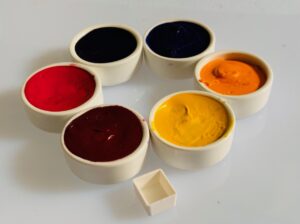
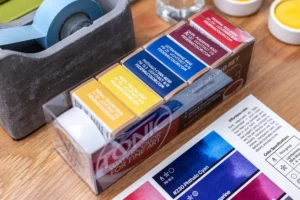
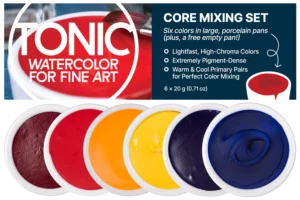
How to support Watercolor – Beginners and Beyond?
When shopping online, please consider using our affiliate links. This helps to pay for prizes and postage to mail the prizes. We mail prizes all over the world. As an affiliate, I earn from qualifying purchases. #ad
Amazon: (I will get credit for anything you purchase after using my link to land on the Amazon site)
- Amazon Storefront (lists of brushes, paint, paper, pens, pencils, mats, budget-friendly supplies, misc items I recommend)
- Amazon – USA
- Amazon – Canada
- Amazon – UK
Art supplies:
- Jackson’s Art Supply
- DaVinci Paints
- St. Louis Art Supply
- Rosemary and Co. brushes
- Jackman’s Art Materials (10% discount code:WBB10)
- SketchBox (10% discount code: DiannSketchBox)
- ArtSnacks (10% discount code: WBB10)
Online watercolor courses:
- Skillshare – 30% discount for annual subscription
- Urban Sketch Courses by Ian Fennelly
- Watercolour Mentor Courses by Darren Yeo
- Etchr Studio Subscription (monthly or yearly, $5 discount on annual subscription with code ETCHRUTYKYD)
Paypal link (if you want to contribute directly to help support the weekly prizes and postage)
Thank you for your support!
If you have ideas to share for future challenges,
please add your comment to the post –>add challenge recommendation
Where else can you find Diann/Watercolor Beginners and Beyond on social media:
- Facebook – personal page
- Instagram – my art account
- Instagram – WBB
- Patreon
- YouTube
- Facebook groups:
For a free 7-day trial on my Patreon: Diann Zimmerman – Patreon.
===
This painting challenge is not endorsed, sponsored, or administered by Facebook, Instagram, or Twitter.
#paintingchallenge #internationalgiveaway #weeklypainting #watercolorchallenge #weeklychallenge #watercolourchallenge #watercolorbeginnersandbeyond #paintingchallenge #artdimazi #emojis #stlouisartsupply
